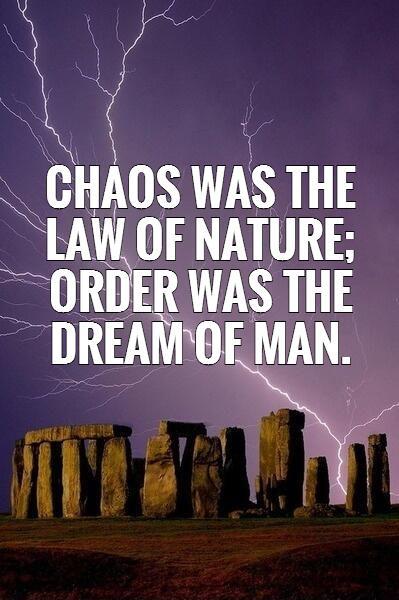Chaos was the law of nature; Order was the dream of man

Chaos was the law of nature; Order was the dream of man
Henry Adams, a prominent American historian and writer, once famously said, “Chaos was the law of nature; Order was the dream of man.” These words encapsulate a profound truth about the inherent nature of the world we live in. In the context of Adams’ philosophy, chaos represents the natural state of the universe, characterized by randomness, unpredictability, and disorder. On the other hand, order symbolizes the human desire for structure, control, and harmony in a world that often seems chaotic and uncontrollable.Adams’ words reflect a deep understanding of the fundamental dichotomy between nature and civilization. Nature, with its cycles of birth and death, growth and decay, is governed by its own laws and rhythms that are often beyond human comprehension. Chaos, in this sense, is not a negative force but rather a natural state of being that is essential for the perpetuation of life and the evolution of the universe.
On the other hand, order represents the human impulse to impose structure and meaning on the world around us. From the earliest civilizations to the present day, humans have sought to create order out of chaos through the development of language, culture, religion, and science. Order is the foundation of human society, providing a sense of stability, security, and purpose in an otherwise chaotic and unpredictable world.
However, Adams suggests that the dream of order is ultimately a human construct, a projection of our own desires and aspirations onto a world that is inherently chaotic and indifferent to our existence. Despite our best efforts to impose order on the world, chaos always lurks beneath the surface, ready to disrupt our carefully constructed systems and plans.












 Friendship Quotes
Friendship Quotes Love Quotes
Love Quotes Life Quotes
Life Quotes Funny Quotes
Funny Quotes Motivational Quotes
Motivational Quotes Inspirational Quotes
Inspirational Quotes